
造纸与生物质材料(英文版)(Paper and Biomaterials)(原:国际造纸) 知网万方维普
- 国级普刊
- 主管单位:
中国轻工业联合会
- 主办单位:
中国造纸学会、中国制浆造纸研究院有限公司
- 国际刊号:
2096-2355
- 国内刊号:
10-1401/TS
- 学科分类:
- 字数:
12000-28000
- 有无基金:
/有基金 100.0%
- 周期:
CN外文-季刊
- 特殊属性:
第一批认定学术期刊,外文期刊
- 电话:
010-64778162;64778163(202303期)
- 邮箱:
pbm607@vip.163.com(202303期)
- 复合因子:
1.649
- 综合因子:
1.474
- 收录:
知网,万方,维普
- 级别:
国级普刊
期刊简介
《造纸与生物质材料》期刊已被查看: 次
更新频次
单位占比
一作占比
/有基金-100.0%投稿指南
1、投稿方式:在线投稿。
2、刊内网址:(202303期)
http://pbm.ijournals.cn/
http://www.cppmp.com/
3、投稿系统:
https://mc03.manuscriptcentral.com/pbms
4、刊内邮箱:pbm607@vip.163.com(编辑部)
5、刊内电话:010-64778162;64778163(编辑部)
6、出刊日期:季刊,逢季首月出版。
7、刊内微信公众号:中国造纸杂志社(bjcppmp)
2024年4月17日星期三
《造纸与生物质材料(英文版)》作者指南
【官网信息】
Guide for Authors
Paper and Biomaterials (quarterly) is a sci-tech journal of paper and biomaterials subject in English. It welcomes submissions from scientists around the world under a broad scope of topics relevant to timely, high-level original research articles and review articles, especially up-to-date achievements and advances in the entire field of raw materials, biomass energy, biomass chemicals, biomass new materials, biomass natural active components, pulp and papermaking, comprehensive utilization of waste liquor and pollution control, equipment, automation, etc.
Text content should be innovative, scientific and practical with clear point, reliable data, sufficient arguments, well organized and accurate terminology. Figures and Tables should be arranged in number. Letters and variables in the figure, table and text are indicated by italics. (Units, Math formulae, Footnotes)
1 Prepare Manuscript
The manuscripts should be follow this order: Title, Authors, Affiliations, Abstract, Keywords, Introduction, Materials and Methods, Results and Discussion, Conclusions, Acknowledgements, References. Ensure that the funds and the profiles of first author and corresponding author are given and kept up to date at the page footer. The figures and tables should be presented in the text, other than at the end of text after the references. The template of PBM can be the reference of detail article format.
1.1 Title
A brief and informative title less than 20 notional words is required. It must accurately identify and describe the manuscript contents. Avoid abbreviations and formulae where possible.
1.2 Author names and affiliations
Please clearly indicate the author's full name, affiliations, city, post code and country. Indicate all affiliations with superscript arabic numerals immediately after the author's name and in front of the appropriate address. Ensure that the funds and the profiles of first author and corresponding author are kept up to date and given at the page footer.
1.3 Abstract and Keywords
The brief abstract should be a single paragraph that is required less than 200 notional words and includes the purpose of the study, methods, results and conclusions. The keywords are required 3~6 words, each keyword separates by “;”. The abstract and keywords are under the title immediately.
1.4 Article structure
1.4.1 Numbered sections
The heading of the text should be within three level (first-level headings 1, 2, 3…; second-level headings 1.1, 1.2…, 2.1, 2.2…; third-level headings 1.1.1, 1.1.2…; the introduction does not sort).
1.4.2 Introduction
It should be clearly stated the background, problem investigated and research purposes.
1.4.3 Material and methods
The sufficient details of material and methods are required to allow the work can be repeated by the readers.
1.4.4 Results and discussion
The original and real data must be provided and the discussion can conclude interpretation of results, principles and/or relationships.
1.4.5 Conclusions
Please summarize the innovative results in brief and make it different from the content of Abstract.
1.4.6 Figures and Tables
Figures and Tables should be arranged in number respectively and should be presented in the text, other than at the end of text after the references. Letters and variables in the figure, table and text are indicated by italics.
Do not provide files that are too low in resolution. Explain all symbols and abbreviations used in the illustrations themselves, but keep the text as short as possible. Make sure that each illustration has a caption, and provide captions to illustrations below the figures separately. The captions should conclude brief title and description of the illustration.
A descriptive title should be placed above each table. Indicate the footnotes with superscript lowercase letters below the corresponding table body.
1.5 Abbreviations
Define each abbreviation in full at its first appearance in the text.
1.6 Acknowledgments
Place acknowledgments at the title page footer. List those individuals who provided help and funds during the research.
1.7 References
The references in the text should be arranged in order. The serial numbers should be put in square brackets and superscript. In bibliographic references, capitalize first letter of the author's surname, and lowercase the rest letters; acronym author's name and empty semi lattice (such as Robert J O). References should be arranged as follows:(Citation in text, Web references, Data references, Reference management software, Reference style, Journal abbreviations source )
For journal article:Shen J, Song Z Q, Qian X R, et al. Dissolution-inhibiting effect of silicate-based inhibitors on precipitated calcium carbonate filler [J]. China Pulp & Paper, 2008, 27 (10): 13-17.
For book:Smook G A. Handbook for Pulp & Paper Technologists[M]. 2nd edition. Bellingham, Angus Wilde Publications Inc, 1997: 20-25.
For symposium: Hubbe M A, Gill R A. Filler particle shape vs. paper properties[C]//A review in 2004 TAPPI Paper Summit-spring Technical and International Environmental Conference. Atlanta, 2004: 141-150.
For dissertation: Cairn R B. Infrared spectroscopic studies of solid oxygen[D]. Beijing, Beijing University, 1964.
For standard:International Organization for Standardization. ISO 690-2:1997 Information and documentation-biliographic references-part 2: electronic documents or parts thereof [S]. Switzerland: International Orgazization for Stanardization, c1997.
For patent: Kogan J, Steiner M. Method of Reducing Fluorescence in Deinking Pulp by Treating Pulp with Ozone and Bleaching Agent: US, 5529660[P].1996-06-25( issued date).
For web reference:Powell A, Johnston P. Guidelines for implementing Dublin Core in XML[EB/OL].http://dublincore.org/documents/dc-xml-guidelines/.
2 Manuscript submission
Please use the online submission system of PBM to submit to the journal. The direct link is http://pbm.ijournals.cn/.
Please designate one author as the corresponding author with E-mail address.
There is a list to be convenient to finally check your submission before you submit. The necessary files should be uploaded as below:
• Title page (including title, all authors' names and Affiliations, fund, and acknowledgments)
•Main documents (without authors information, fund and acknowledgments)
• Abstract
• Keywords
• Supplemental files (where applicable)
3 Contact us
Address:No. 607 Sinolight Plaza, 4 Yard, Qiyang Road, Wangjing
Chaoyang District, Beijing, China
Post code:100102
Telephone:8610-64778162 8610-64778163
Fax:8610-64778174
E-mail:pbm607@vip.163.com
《造纸与生物质材料》同类轻工业|手工业期刊
-
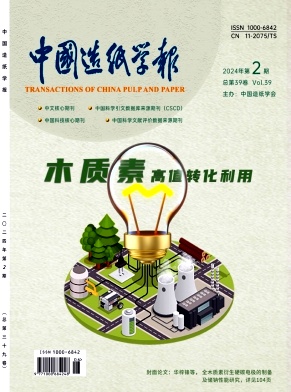
中国造纸学报
北核,科核,CSCD扩,武A
CN中文-季刊影响因子2.147
-
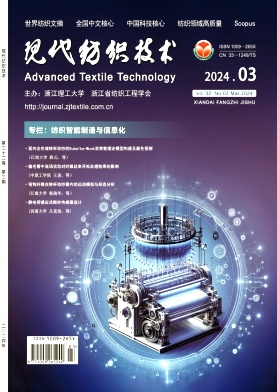
现代纺织技术
北核,科核,高T3,CACJ-核心,武B+
CN中文-月刊影响因子1
-
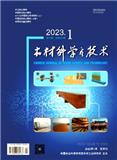
木材科学与技术(原:木材工业)
北核,科核,武A
CN中文-双月刊影响因子1.252
-
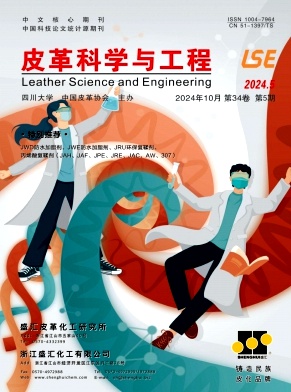
皮革科学与工程
北核,科核,武A-,CACJ-核心
CN中文-双月刊影响因子1.302
-
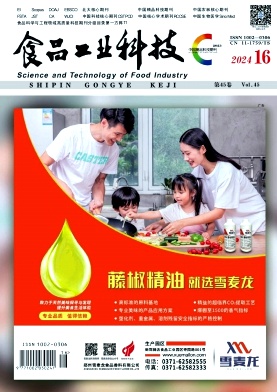
食品工业科技
北核,科核,武A
CN中文-半月刊影响因子2.561
-
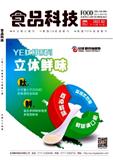
食品科技
北核,科核,武A-,CACJ-入库
CN中文-月刊影响因子1.609
-
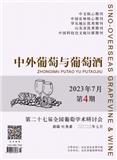
中外葡萄与葡萄酒
北核,武B+
CN中文-双月刊影响因子1.487
-
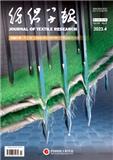
纺织学报
北核,CSCD,科核,武A+,高T1,EI(中国2024)
CN中文-月刊影响因子1.886
常见问题
-
造纸与生物质材料杂志社官网、联系方式是什么?
造纸与生物质材料杂志社官网:http://pbm.ijournals.cn/
投稿网址:https://mc03.manuscriptcentral.com/pbms联系电话:010-64778162;64778163(202303期)
投稿邮箱:pbm607@vip.163.com(202303期) -
造纸与生物质材料杂志是核心期刊么?
造纸与生物质材料不是核心期刊,级别是:国级普刊, 是:轻工业|手工业分类下的知网,万方,维普收录的期刊。
-
请问你们是造纸与生物质材料杂志社吗?
我们不是《造纸与生物质材料》杂志社。本站主要从事期刊信息展示与期刊推荐,不是任何杂志官网,直投稿件请联系杂志社。本站仅提供免费的学术指导、论文辅导、期刊投稿信息整理收集服务。
-
你们指导服务后可以保证文章被发表吗?
期刊发表的成功与否,主要取决于文章内容的质量。编辑老师会根据研究领域、创新性等多因素进行考量。我们会帮助您理解期刊的发表要求,助力提升发表几率,从而增加发表的机会。
-
晋级论文能否在报纸上发表?
在学术界,论文的发表往往被视为研究者职业发展的重要一环。晋级论文,即为了获得更高职称或学术地位而撰写的学术论文,通常需在专业期刊上发表。然而,许多人可能会问
